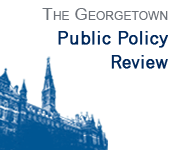by Brent Wisner
“The government of the United States has been emphatically termed a government of laws, and not of men.” (Marbury v. Madison 1803) With these words, Chief Justice Marshall established the power of Judicial Review, and with it an ironic byproduct—a government of laws, interpreted by men. The Supreme Court, while nonpolitical in theory, is in a unique and powerful position to affect policy from the bench. The debate surrounding judicial activism comes up every time the President nominates a new Supreme Court Justice and the political dimensions of a Senate confirmation take hold. Conservatives use judicial activism as a lightening rod to ferret out would-be liberal judges bent on upholding gay marriage and abortion, and liberals speak of “holy” precedent to secretly determine whether the nominee will overturn Roe v. Wade. In either case, judicial activism is fundamentally a pejorative phrase. However, few researchers have used data to determine if such allegations ring true. This article uses an econometric approach to determine if the Roberts Court, currently poised to begin its fourth term, is an activist Court compared to the previous four courts.
The Roberts Court garnered an early reputation for judicial activism (Cohen 2007 and Rosen 2009). Within the first year, the Roberts Court upheld the constitutionality of the Partial-Birth Abortion Ban Act, and led a decision holding that the fourteenth amendment prevents racial integration, boldly stating, “the way to stop discrimination on the basis of race is to stop discriminating on the basis of race” (Parents Involved in Community Schools v. Seattle School District 2007). Several commentators note that conservative justices overturn more law then liberal justices (All Things Considered 2009). However, even in the face of these accusations, the evidence is marginal at best. In fact, conservative Justices overturn more laws because there have been more laws passed during the Rehnquist and Roberts Courts; law passed by left-leaning Congresses (Bolick 2007). This year the Court is poised to tackle some challenging cases, cases particularly vulnerable to the Justices’ personal convictions (Citizens v. Federal Election Commission 2009). How, then, can one measure judicial activism in a way that makes sense? And more importantly, is the Roberts Court as much an activist as liberals seem to believe?
Judicial activism is a difficult concept to define. For the purposes of this study, however, judicial activism is defined as the Court exercising the ultimate power of the Judiciary—declaring any law, act, or statute unconstitutional. This study uses data complied by The U.S. Supreme Court Database, which is a project conducted by the Washington University of St. Louis School of Law to codify and catalog all Supreme Court case decisions and dispositions since the 1950’s. The model consists of five simple variables for all 10,972 decisions made by the Supreme Court under Chief Justices Warren, Burger, Rehnquist and Roberts:
Overturn = β1 + β2 Direction+ β3 Warren + β4 Rehnquist + β5 Roberts + μ
The independent variable, Overturn, is a dummy variable concerned with whether the Court declared a law unconstitutional. The first dependent variable, Direction, is a control variable and is a measure of the political orientation of the decision itself. The U.S. Supreme Court Database isolated the political orientation of the decision using a robust categorization method.2 The final three variables are dummy variables for the Warren, Rehnquist and Roberts Courts, with the Burger Court as the base group. The results are shown in Table 1.
Table 1. Overturn Model Results
Variable Coefficient Significance
Direction 9% 99%
Warren -4.32% 99%
Rehnquist -1.5% 95%
Roberts -3.43% 95%
F-Value = 87.28 (99%), R2 =0 .0308
These preliminary results suggest that liberal attacks on the Roberts Court are premature and not fully supported by the data. Comparing the Roberts Court with the Warren and Rehnquist Courts reveals that on the scale of judicial activism, the Roberts Court is on average more likely to declare a law unconstitutional than the Warren Court, but not as likely as the Rehnquist Court. This result is surprising. The Warren Court is considered to be the definition of an activist court, and yet the data suggests that the Roberts Court is more activist. However, the Roberts Court appears to be less activist than the Rehnquist Court, despite accusations to the contrary.
While this particular study is cursory, it suggests that the Roberts Court is neither as activist as liberals believe, nor as constructionist as conservatives would hope. To better examine the ideological underpinnings of the Roberts Court, further research is needed—research based on solid data rather than opinion. What is clear, is that as the Roberts Court comes into its fourth term, the Justices will be in a position to drastically affect how activist the court will be, and more importantly, affect several important policies dealing with campaign contributions, First Amendment speech, and fundamental privacy rights (for example Citizens v. Federal Election Commission). If past is prologue, those policies will be driven not by an interpretation of the Constitution, but by the exercise of judicial activism.
All Things Considered. “The Roots of Judicial Activism.” National Public Radio (May 30, 2009) available at http://www.npr.org/templates/story/story.php?storyId=104755960.
Bolick, Clint. “A Cheer for Judicial Activism.” CATO Institute (2007) available at http://www.cato.org/pub_display.php?pub_id=8168.
Citizens v. Federal Election Commission Oral Argument, available at http://www.supremecourtus.gov/oral_arguments/argument_transcripts/08-205[Reargued].pdf
Cohen, Adam. “Last Term’s Winner at the Supreme Court: Judicial Activism.” New York Times (July 9, 2007) available at http://www.nytimes.com/2007/07/09/opinion/09mon4.html.
Marbury v. Madison, 5 U.S. 137 (1803), http://www4.law.cornell.edu/supct/html/historics/USSC_CR_0005_0137_ZO.html.
Parents Involved in Community Schools v. Seattle School District No. 1, 551 U.S. 701 (2007).
Rosen, Jeffery. “The Trial of John Roberts.” New York Times (September 12, 2009) available at http://www.nytimes.com/2009/09/13/opinion/13rosen.html.
The Supreme Court Database, available at http://scdb.wustl.edu/data.php
For a complete description of the variable, please visit: http://scdb.wustl.edu/documentation.php?var=decisionDirection
Established in 1995, the Georgetown Public Policy Review is the McCourt School of Public Policy’s nonpartisan, graduate student-run publication. Our mission is to provide an outlet for innovative new thinkers and established policymakers to offer perspectives on the politics and policies that shape our nation and our world.
